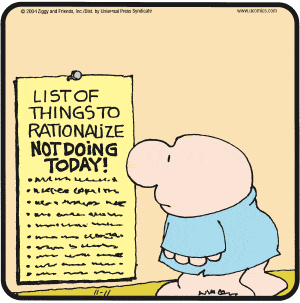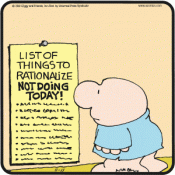Yes, that’s it, another Three Letter Acronym (or TLA for short) – Real-Time Analytics. It’s been proven that it’s beneficial to bid in real-time, creating an auction style marketplace for ad inventory. But why not analyze and react to the analytics variables received, in real-time as well? Mobile users have an array of meta data associated with location, plus time, sentiment, etc. If I were an advertiser, I’d be most interested in valuing my impressions appropriately, based on things like audience characteristics, location and behavior. While, today, most RTB platforms do an excellent job of bidding on impressions based off of pre-defined parameters, I’m excited for the day when the programmatic space, especially in mobile, is using big data, not unlike PlaceIQ’s, to analyze buying decisions combining intelligence with auction to create smart auctions. We often hear about analytics driving real-time decisions, but truly dig deep and you’ll find that is just not the case. Usually, data’s used in a predictive nature. Moving toward real-time could be potentially game changing and add value to inventory, while increasing budgets toward programmatic sources. [Read more…]
The Self-Starter
 So, you have a great idea and want to start a business – good for you! Along with everything else you have to worry about (products, marketing, accounting, employees, profitability) you also need to beware of the hidden entrepreneurial danger. It lurks in the shadowy depths of good meetings, hot ideas and the expertise of others. It’s lack of follow through and general apathy.
So, you have a great idea and want to start a business – good for you! Along with everything else you have to worry about (products, marketing, accounting, employees, profitability) you also need to beware of the hidden entrepreneurial danger. It lurks in the shadowy depths of good meetings, hot ideas and the expertise of others. It’s lack of follow through and general apathy.
It’s easy to cure your own apathy, especially when paychecks rely on project and task completion. The true self-starter is able to get others, that show less urgency, to operate on a schedule consistent with their needs. Beware of your partners and suppliers holding up the show. If you want to be great, you’ll learn how to manage those relationships to work with the timetables that are needed for your business to be successful. It stinks, I know, because managing personal behavior is difficult enough – let alone someone else’s. But trust me, it’s necessary.
I believe it was Ben Franklin that said, “expect the worst and be pleasantly surprised when it doesn’t happen.” If we were in church I’d be yelling preach. But we’re not so I’ll yell chuuch to ol’ Bennie F. What he says (or what I think he says) makes fantastic sense. Instead of being happy when it doesn’t happen, though, I’ve decided to proactively start to sit on vendors like park benches. It’s not fun and I’d much rather allow people to do what they say they’re going to do, when they say they’re going to do it. Unfortunately, it’s rare when that happens.
Setting up a process for managing the completion of projects when most effective for your peak profitability is key. Part of that strategy may be managing the behavior of a partner/vendor/employee to get things done in the way and time your business needs.
It’s funny, we (me included) are often talking about Customer Relationship Management tools. Sometimes I feel like we need a Business Relationship Management tool, to effectively manage communications with our business partners.Seriously, this idea could save a business or three. I wonder who can help me get this launched? Hmmmm…
Inquiring minds want to know – do you have any tips for managing relationships and keeping people on task?
What Does Hand-Raiser Mean?
 It’s funny how sometimes people can overlook the explanation of something that is not at all foreign to them. I was recently talking with a friend from another country about the recent trades made in the NFL, in intricate detail about the implications of each, forgetting that he was from Brazil. When I was done and asked for his opinion he questioned, “so the cornerbacks defense the receivers, right”? It hit me, I needed to do some more explaining…and help him with his conjugations. First things first, so I told him, “no they ‘defend’ the receivers – and yes…sort of.” Anyway, that was the end of that conversation and it got me to thinking about other things that I just assume people know. I have had people ask me what does hand-raiser mean, and I just assumed that was a pretty generic term used by the masses. Again, I was wrong.
It’s funny how sometimes people can overlook the explanation of something that is not at all foreign to them. I was recently talking with a friend from another country about the recent trades made in the NFL, in intricate detail about the implications of each, forgetting that he was from Brazil. When I was done and asked for his opinion he questioned, “so the cornerbacks defense the receivers, right”? It hit me, I needed to do some more explaining…and help him with his conjugations. First things first, so I told him, “no they ‘defend’ the receivers – and yes…sort of.” Anyway, that was the end of that conversation and it got me to thinking about other things that I just assume people know. I have had people ask me what does hand-raiser mean, and I just assumed that was a pretty generic term used by the masses. Again, I was wrong.
For those of you that are not aware of what a hand-raiser is in the marketing world, it can be summed up in a simple sentence. A person that identifies themselves as a prospective customer, to a company, by giving them their contact information. The important part of the equation is the sharing of the contact information. A name, birth sign, favorite food, the time, or anything else is irrelevant unless that person can be contacted. Well, I guess those other things can be used as research, but how accurate is it? They didn’t even hook you up with the “ten” (phone #) or the email!
Once you realize what they are, it can be easy to see why there is such a clamor to attain these types of introductions. First, you can make a warm contact, rather than a cold one. There is likely information stored about what that contact was interested in learning more about. You can fill your CRM with more names and numbers. Most of all, though, you have a chance to build a new relationship. Like all other things in life, building relationships based off of mutual interest usually works out better for both parties than a predatory style meeting. This is not to say that prospecting and reaching out to new prospects that show a propensity to be interested in services/products like yours is not okay. To the contrary, the hunter is necessary to build revenue streams and develop your business. The fact is, those relationships take longer to build; they are more costly to develop; and the failure rate is much higher.
The statistics about success rate are varied and unreliable. What cold-call company is going to admit a low success rate, and most lead generation tools are going to tell you how much success you can attain through warm leads. The final metrics I will leave up to you. But, as a general rule people say that you want to have 25 times the number of leads than target sales. So, if you have a goal of 10 new customers per month, then you should be targeting 250 likely prospects. That works out to a 4% success rate. If you can keep your success rate there, then you’re generating the right leads and should continue on. If you’re targeting 500 people and still only selling to 10 new customers a month, I would tell you to look at who you are targeting first. Then, if it seems as though you’re generating interest but no sales then your product and/or marketing message needs to be evaluated, because you should be closing hand-raisers. Then I would tell you to give me your coffee, because “coffee is for closers.”
You don’t want that, and neither do I, so inspire people to be hand-raisers for your products and services then close some deals! Does anyone have warm lead success stories to share?
Are Your Project Goals Clearly Defined? Part 2 – M.O.S.T.
In my last post, I spoke of clearly defining project goals, so that brand and product introductions were executed in a manner consistent with your goals and or communications objectives. I wrote about three main points that must be present to ensure timely and on-target delivery. Those three necessary general themes include timing, creating engaging message appeal, entering markets that can support your product or brand. Within each of those themes are more specific behaviors that will assist in the clarity of the message.
Today, I’m going to speak writing a clear creative brief. Sometimes, creative comes off half cocked, because it is funny or catchy but has nothing to do with the big idea of the brand. I prefer to implement the Mission, Objectives, Strategies, Tactics (M.O.S.T.) system, when developing creative strategy.
Often times the creative process ends up being a quagmire due to competing interests and ideas about what the creative should represent, and how. A clear and detailed creative brief is a necessary tool in making sure that the creative message is integrated with the brand and the big idea of the project. Having a good creative idea means nothing if it does not support the brand and the project. You wouldn’t prepare a chicken to be grilled, get all of the grill fixin’s, and then bake it just because you found a good recipe, would you? Well, don’t do it with your creative content.
This is why M.O.S.T. is so important – because each section can systematically align outcomes with a reason and clear objective.
The first part of this acronym is Mission, and it is exactly what it says it is. The mission should be the overarching theme of the creative. More importantly, the mission should be closely aligned with overall company goals, to make sure that the creative is integrated with the general direction of the organization. I would urge you not to over think this section. It should come very easily if you know where you want to end up and/or portray with your communications. If you don’t then you should go back to the proverbial drawing board and figure out what your company “is.”
Objectives can be a little more tricky. The reason being, is that research on the subject should be undertaken, to know what kinds of objectives are reasonable. Can you reach 200,000 people with the money that you have, or can you only reach 20,000 given your media plan? That must all be taken into account, as the objectives aren’t pie in the sky hopes, but achievable necessities for you to measure success. Scope is quite important when managing expectations and defining whether or not your ideas and execution were successful or a total bust. You also need to be timely with your objectives. When should each individual item happen? Can you answer what months, days, times of day, update intervals, etc are going to affect the delivery and reception of your communications? if not, then you have a problem; you may need to see a specialist; we can work all of that out for you.
Strategies is the fun and creative part of this whole process. Let the creative ideas flow like dime beers at a campus bar!! I like to shoot out all ideas in the strategy section. As long as they are integrated with the message and executable, I say go crazy and come up with the ideas that can be game changers. Allow your creative folks to execute and bring life to the ideas that generate from focused and directed planning and thought processes. To make sure that I have thought of all strategical aspects I manage whether or not I have satisfied Overall, Promotions, Design, Price, and Investment strategies.
Finally, Tactics can be described as the strategy implementation methods. Take the big idea and make it materialize into conceptual material. I offer no hardcore “do this, don’t do that” methods for this particular section because it is the most creative and personal to your brand. I will only mention that the tactics should be naturally connected to the other three parts of the technique. If the public relations tactics for your line of eco-friendly lamps (for instance) does not support an objective that dictates reaching out to all local eco communications publications within a 200 mile radius, then you have a problem. You have a problem if it does not support the strategy to only explain the energy saving wattage if the tactic involves mentioning cost-savings, in the Penny-Saver. This is especially true if your brand image exudes eco-friendly because it is right, not because it is less expensive. The moral of the story is, if you stay consistent then you should be successful (moderately at least) with reaching your objectives.
What strategy do you use, when it comes to creative development and implementation?
Are Your Project Goals Clearly Defined? Part 1
What would you think is the number one thing effecting the success of your next campaign or product release? Well, if you read the title and guessed clearly defined goals, please continue reading. If not, back up and read another blog, as these communications are not going to be helpful for you. The issue is so obvious but so often overlooked that it deserves some attention. Quite simply, if one cannot clearly articulate the project requirements then the project is most likely doomed to fail; come in over budget; or become something not originally intended.
you read the title and guessed clearly defined goals, please continue reading. If not, back up and read another blog, as these communications are not going to be helpful for you. The issue is so obvious but so often overlooked that it deserves some attention. Quite simply, if one cannot clearly articulate the project requirements then the project is most likely doomed to fail; come in over budget; or become something not originally intended.
Failing can happen because human assets will usually deliver when called upon. Unfortunately, what they can often deliver is an unfocused mess, if they are not given clear objectives. There are some typical things that a company needs to do to direct their people and/or their firm to make this happen. [Read more…]
A Co-Mingling of Expertise
Tim and I have felt as though we received so much benefit from the community and collaborative nature of the contestants, judges, and blog responders from Blog Off 2, that we would share some excerpts from the multiple conversations that we have engaged in, about branding and going to market with a new product, for a combined final post. The following (edited for your reading enjoyment) rhetoric outlines some of the finer points of our conversations… [Read more…]






Follow Us!